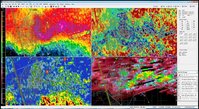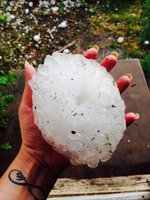Adam Adkins
EF3
I have been interested lately in what causes big hail (4" or larger) to fall where it does. If you look at archived storm reports, there are some obvious signs such as CO, KS, OK, TX, NB, SD, IA, and MO, which has the highest frequency of very large hail because of how close they are to the freezing level (elevation), and frequency of supercells. But what about other areas? Colorado does not have the extremely big (4.5"+) hail that they do just east, despite it being so close to the freezing level. Then, there is a belt from SW of Atlanta northeast into central NC where these are more common (and tornadoes for that matter). Is that the result of some kind of forcing from the Appalachians?
Lastly, what is your nomination for best big hail video? I think these are the best storm videos, and really big hail is rare to catch! What are your favorites?
Lastly, what is your nomination for best big hail video? I think these are the best storm videos, and really big hail is rare to catch! What are your favorites?



